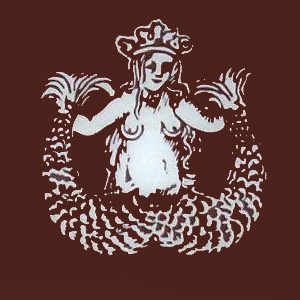This chapter is especially relevant to my specific research on copycat logos and parodies. The article helped me understand that all semiotic elements or resources of a logo has its meaning and purpose. Designers use shape, placement, color, texture, and pattern with purpose to convey a certain concept about their product or company within just the logo. Every element is thought about and placed in the logo to further the intended meaning. I realize even more now how essential logos are to a company. They create the company's entire image and represent what the company stands for to the rest of the world.
Not only is this interesting pertaining to the Starbucks logo itself (what each semiotic resource is meant to convey) but it is even more interesting to see what the knockoff Starbucks's decided to include and exclude in their variating versions of the logo. Besides the obvious visual aspects (like the color green and the circular shape of the logos) some cafe's went even further than just looking like the Starbucks logo. Two examples are Mt. Rainier Espresso & Milk (of Japan) and Barista Coffee (of Taiwan). These cafe's are not only visually similar to the Starbucks logo but they clearly refer to Seattle itself (which, as we know, is closely associated with Starbucks). Mt. Rainier Espresso & Milk depicts Seattle's famous mountain as the image in the center circle. Similarly, Barista Coffee went so far as to steal Seattle's official state logo (a profile of whom I assume is Chief Sealth) and placed it as their center image. These blatant references to Seattle combined with the visually similar layouts of their logos is a clear indicator of their intent. As one blogger aptly put it:
“If Starbucks = Good Coffee
and
Seattle = Starbucks
and
Mt. Rainier = Seattle, Washington
then
Mt. Rainier = Good Coffee too, right?”
Researching the numerous parodies and knockoff logos of Starbucks really shows us the far reaching success of the company and it's instantly-recognizable logo. Like the author of Visual Identities, I am comparing logos and their semiotic resources, however, unlike comparing two competitors and their opposite meanings, I am comparing logos that wish to embody the same meanings as the original logo represents. Which semiotic resources they choose to use is the most telling of all.
Subscribe to:
Post Comments (Atom)

No comments:
Post a Comment